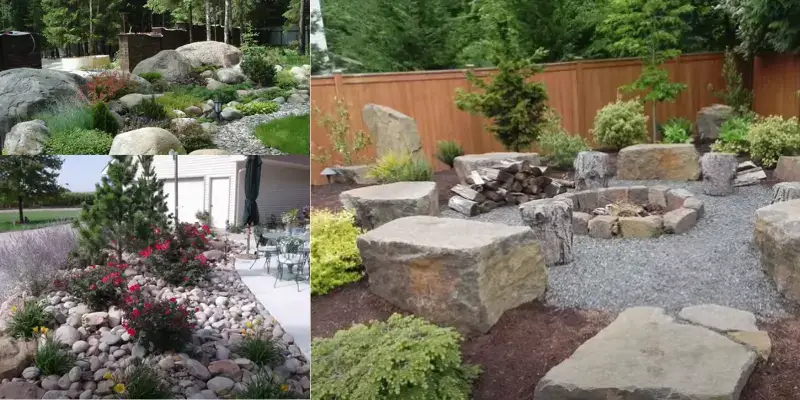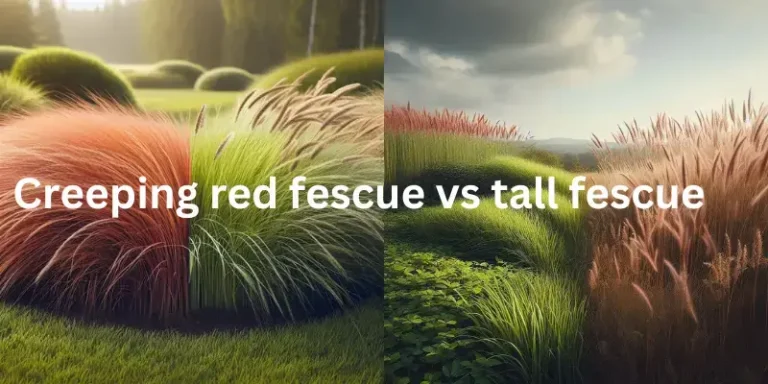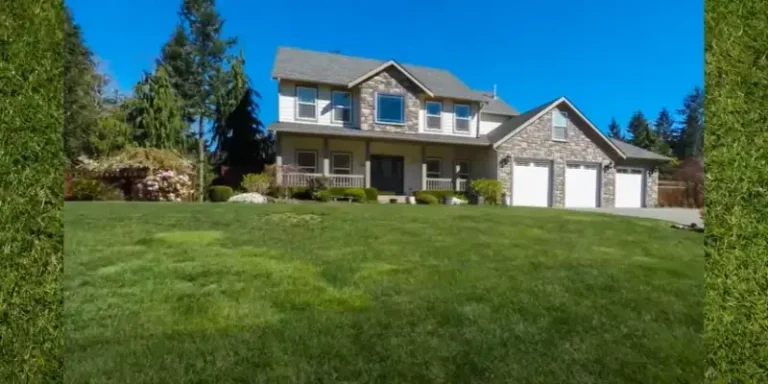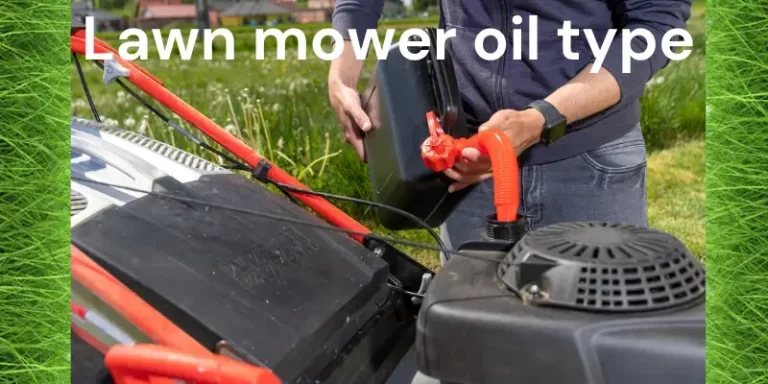Rock Garden Ideas for Small Spaces – Complete Guide 2024
Rock gardens have captivated the hearts of garden enthusiasts for centuries, offering a blend of artistic beauty and natural ruggedness. Even in the smallest of spaces, these miniature landscapes provide a serene escape from the hustle and bustle of urban life. Not only do they enhance the aesthetic appeal of your outdoor area, but they also present practical solutions for gardening within limited spaces.
Many homeowners are not in favour of grass mowing because it is time-consuming, so they opt for a rock garden, which gives an aesthetic look in a short time while adding more creativity.
I aim to shed light on the enchanting world of rock gardens, and how they serve as an ideal choice for people who live in cities and those with petite patios or balconies.
Why Consider a Rock Garden?
For many, the appeal of a rock garden lies in its ability to transform a compact, perhaps even barren, space into a flourishing oasis. Unlike traditional gardens, rock gardens require minimal ground area and can thrive in conditions that might hinder other types of gardening.
They’re not just about the rocks; these gardens mimic the serene beauty of natural landscapes, bringing a piece of the mountainous outdoors to your doorstep. Plus, they offer a sustainable gardening option, requiring less water and maintenance than grassy lawns or flower beds, making them both eco-friendly and time-efficient.
The Foundations of Rock Gardening
Rock gardens have a rich history that spans across continents and cultures, originally inspired by the natural landscapes that dot our planet. These gardens first gained popularity in Japan, where they were intertwined with Zen Buddhism, serving as spaces for meditation and reflection. In the West, rock gardens were embraced for their aesthetic appeal and their ability to create alpine landscapes in domestic settings.
What Makes a Rock Garden?
At its core, a rock garden emulates rugged mountain terrains and arid desert vistas, bringing the essence of these natural habitats into your backyard. The three essential components of a rock garden are:
- Rocks: The soul of the garden. Choose rocks that vary in size and shape to mimic natural landscapes. Placement should be thoughtful, with larger stones anchored deeper into the ground to provide stability and realism.
- Soil: The foundation that supports your plants. A mix of sand, peat, and loam provides the excellent drainage that rock garden plants require to thrive.
- Native Plants: The living colors of your garden. Select plants that are adapted to rocky environments, such as succulents, alpine flowers, and groundcovers. These plants are not only resilient but also create a harmonious blend with the stones.
Adapting to Modern Spaces
While traditional rock gardens cover expansive areas, modern adaptations focus on versatility, allowing for the creation of rock gardens in limited spaces. Whether it’s a corner of a small backyard, a balcony container garden, or even a portion of your driveway, a rock garden can fit almost anywhere. The key is to scale down the elements while maintaining the garden’s natural aesthetic.
Designing Your Rock Garden Oasis
Creating a rock garden offers a unique opportunity to design a tranquil retreat that mirrors personal tastes and complements the home’s overall aesthetic. Even in the smallest spaces, a rock garden can become a source of daily serenity and beauty. The key to success lies in thoughtful planning and creative design.
How Do You Choose a Theme for Your Rock Garden?
Choosing a theme for your rock garden is the first step in the design process. This theme should reflect your personal style and fit the existing landscape of your home. Some popular themes include:
- Zen Garden: Characterized by minimalistic design, using sand or fine gravel to represent water, with strategically placed rocks and sparse vegetation.
- Alpine Garden: Mimics high mountain environments, featuring a variety of alpine plants nestled among rocky terrain.
- Desert Garden: Utilizes drought-resistant plants like cacti and succulents, with sand and stone to recreate the feel of a desert landscape.
Once you’ve selected a theme, you can begin to envision how your garden will take shape within the constraints of your space.
Maximizing Small Spaces
Designing a rock garden in a small space requires creativity and strategic planning. Here are some tips for maximizing the potential of your limited area:
- Vertical Gardening: Make use of vertical space by incorporating wall-mounted planters, stacking rocks to create height, or using trellises for climbing plants.
- Containers and Raised Beds: If ground space is limited, consider using containers or building raised beds for your rock garden. This approach not only saves space but also offers more control over soil conditions.
- Focal Points: Create a focal point with a large rock, water feature, or striking plant. This draws the eye and makes the space appear larger by providing a sense of depth.
By combining these strategies with your chosen theme, you can transform even the smallest outdoor area into a captivating rock garden oasis that feels both expansive and intimate.
Step-by-Step Rock Garden Construction Guide
Building a rock garden, especially in a small space, is a manageable project that can greatly enhance your outdoor area. This chapter provides detailed instructions to prepare the site and lay the foundation for a beautiful and enduring rock garden.
Preparing the Site
The first step in constructing your rock garden is preparing the site. This involves:
Clearing the Area: Remove any weeds, grass, and debris. It’s crucial to start with a clean slate to prevent unwanted growth among your rocks and plants.
Planning Drainage: Ensure the site has good drainage to prevent water from pooling. This may involve elevating the area slightly or incorporating a subtle slope.
Defining the Shape: Use a garden hose or string to outline the shape of your garden. This helps visualize the space and assists in the strategic placement of rocks.
Laying the First Layer of Rocks
The rocks you choose serve as the backbone of your garden, and their placement is both an art and a science.
Selecting Rocks: Choose rocks of various sizes, shapes, and colors to add interest and mimic a natural setting. Larger rocks should be placed first to anchor the design.
Positioning Rocks: Lay the largest rocks so they appear partially buried, which lends authenticity to the arrangement. Consider the angles and positioning carefully, as these rocks set the tone for the entire garden.
Securing Rocks: Ensure each rock is firmly embedded in the ground to prevent shifting. You may need to dig a portion of the rock into the soil to stabilize it.
Creating Natural-Looking Arrangements
To achieve a natural look:
Group Rocks Thoughtfully: Rocks in nature rarely stand alone, so group them in clusters, keeping in mind how they might have been placed by natural forces like water or wind.
Vary the Orientation: Rotate the rocks so their strata lines aren’t all aligned in the same direction, which adds to the garden’s natural feel.
Consider the Flow: Arrange rocks and plants in a way that leads the eye through the garden, creating a sense of movement and intrigue.
Ensuring Proper Drainage
Proper drainage is critical in a rock garden to prevent water from stagnating and damaging the plants. Mixing gravel, sand, and organic matter into the soil can enhance its draining properties. Additionally, consider installing a French drain or similar drainage solution if your site is prone to water accumulation.
By following these steps, you’ll lay a solid foundation for your rock garden, setting the stage for planting and further personalization. The joy of seeing your garden take shape is both rewarding and inspiring.
Planting Strategies for Year-Round Beauty of Your Rock Garden
A rock garden, by its nature, offers a unique environment for plants. The choice of vegetation is crucial, as these plants need to be hardy and adaptable to rocky soil conditions. This chapter will guide you through selecting the right plants for your garden and offer tips for planting and maintenance.
Choosing the Right Plants
The key to a vibrant rock garden is selecting plants that are well-suited to the challenging conditions of rocky terrains. These might include:
- Succulents and Cacti: With their drought-resistant qualities, succulents and cacti are perfect for rock gardens. Varieties like sedum or sempervivum add texture and color.
- Alpine Plants: Adapted to high altitudes, alpine plants like saxifrage, phlox, and dwarf conifers are accustomed to rocky soils and irregular watering.
- Native Perennials: Incorporating native plants ensures your garden is in harmony with the local ecosystem. They typically require less maintenance and attract native wildlife.
Planting Tips
When planting in a rock garden:
Amend the Soil: Even though rock garden plants thrive in less fertile conditions, amending the soil with compost can help provide the nutrients they need without compromising drainage.
Mind the Gaps: Plant in the crevices and gaps between rocks to achieve a natural look. This also helps retain soil moisture and provides shelter for the plants.
Water Wisely: Initially, your plants will need regular watering to establish roots. However, once established, rock garden plants generally require less water, reflecting their natural habitats’ conditions.
Maintenance for Thriving Plants
To keep your rock garden looking its best:
Weed Regularly: Weeds can compete with your chosen plants for resources. Regular weeding helps ensure your plants remain healthy and visible.
Prune and Deadhead: Pruning and deadheading spent blooms encourages healthy growth and prolongs flowering.
Monitor for Pests: Keep an eye out for pests that could damage your plants. Often, a simple solution like insecticidal soap can address minor infestations.
Creating a rock garden with a diverse array of plants not only enhances its beauty but also ensures a lively display throughout the seasons. With careful selection and proper care, your rock garden will evolve into a flourishing ecosystem that captivates and soothes all year round.
Advanced Features and Personal Touches
Personal style. This chapter offers ideas for incorporating unique features that not only enhance the beauty of your garden but also increase its functionality and enjoyment.
Incorporating Water Features
Water features add a dynamic element to rock gardens, introducing sound and movement that enhances the tranquil atmosphere. Consider these options:
Birdbaths: A simple birdbath can serve as a focal point, attracting birds and adding life to your garden.
Small Ponds or Waterfalls: If space allows, a small pond or a waterfall built among the rocks creates a mesmerizing effect and can be a haven for wildlife.
Adding Pathways and Seating
Creating pathways and seating areas invites exploration and relaxation within your rock garden.
Pathways: Use stepping stones or gravel to design meandering paths that encourage visitors to wander and discover hidden nooks.
Seating Areas: A bench or a few strategically placed chairs offer a spot to sit back and enjoy the serene setting you’ve created.
Personalizing with Unique Rock Formations and Plant Combinations
Personal touches are what truly make your rock garden unique.
Rock Formations: Arrange rocks to create specific shapes or patterns that hold personal meaning or simply delight the eye.
Plant Combinations: Experiment with color, texture, and height by pairing plants in unexpected ways. This not only showcases your personality but also creates a visually stimulating environment.
Enhancing with Art and Accessories
Consider adding art pieces or decorative accessories that complement the garden’s theme.
Garden Art: Sculptures, wind chimes, or decorative stones can add an artistic flair to your rock garden.
Accessories: Lanterns, flags, or bird feeders are practical yet charming additions that infuse your space with character.
By integrating these features, your rock garden transforms into a more personalized and immersive experience. It becomes not just a place of beauty, but a sanctuary that reflects your individuality and fosters connection with nature.
Troubleshooting Common Issues in Rock Gardens
Even with careful planning and design, every garden encounters challenges. This chapter addresses common issues specific to rock gardens, offering practical solutions to ensure yours remains a thriving oasis.
Dealing with Weeds
Weeds can be persistent in any garden, and rock gardens are no exception.
- Prevention: Start with a weed barrier beneath the soil and rocks to minimize weed growth.
- Maintenance: Regular weeding is essential. Removing weeds while they are young prevents them from taking hold and spreading.
Controlling Pests and Diseases
Pests and diseases can affect the health of your plants.
- Natural Solutions: Encourage beneficial insects that prey on common pests. Use neem oil or insecticidal soap as eco-friendly options for managing outbreaks.
- Regular Inspection: Catching problems early is key. Inspect your plants regularly for signs of distress and address issues promptly to prevent spread.
Managing Erosion
Erosion can be a concern in rock gardens, especially on slopes.
- Proper Construction: Ensure rocks are securely placed and consider using terracing or retaining walls on steeper slopes to prevent soil from washing away.
- Ground Cover Plants: Utilizing ground cover plants can help stabilize the soil and reduce erosion risk.
Seasonal Care
Your rock garden will require different care routines as the seasons change.
- Spring: Refresh mulch, check for winter damage, and prune where necessary.
- Summer: Focus on watering and managing weeds.
- Fall: Prepare your garden for winter by removing debris and adding protective mulch if needed.
- Winter: Protect sensitive plants from frost and check structures for damage from snow or ice.
By being proactive and attentive, you can address these common issues effectively, ensuring your rock garden remains a source of beauty and tranquility throughout the year.
Frequently Asked Questions (FAQs)
How do you make a little rock garden?
To make a little rock garden, choose a sunny spot, clear the area of grass and weeds, and lay down a weed barrier. Arrange rocks of various sizes for a natural look, then fill gaps with soil and plant drought-tolerant plants.
How do you use rocks in a small garden?
In a small garden, use rocks to create focal points, pathways, and borders. Position larger rocks first for structure, then fill in with smaller stones and gravel to add texture and contrast.
How do you prepare a rock garden area?
Prepare a rock garden area by clearing the site of vegetation and debris, ensuring good drainage by adding sand or gravel if necessary. Lay a weed barrier fabric before placing rocks and plants.
What is the layout of a rock garden?
The layout of a rock garden should mimic natural landscapes with varying rock sizes, creating tiers or terraces if space allows. Incorporate curves and irregular shapes for a more organic appearance.
What is the best base for a rock garden?
The best base for a rock garden is a well-draining mixture of sand, gravel, and garden soil. This prevents waterlogging and provides a stable foundation for rocks and plants.
What is the best soil for rock gardens?
The best soil for rock gardens is a sandy loam that drains well but retains enough moisture for plant roots. Adding compost can improve the fertility and structure of the soil.
What is the best rock for a garden?
The best rock for a garden depends on the desired aesthetic and function. Common choices include limestone, sandstone, and granite, each offering unique textures and colors to enhance a garden design.
Conclusion
Embarking on the creation of a rock garden is a journey of transformation. Not only does it turn a small space into a peaceful retreat, but it also offers an opportunity to engage creatively with your environment. With the insights and tips provided in this guide, you are now equipped to design, build, and maintain a rock garden that will bring year-round enjoyment and serenity. Remember, the most beautiful gardens are those that evolve with care and personal expression.

About Naveed A Hashmi
In my childhood, I used to see my parents while working in the land, for these reasons today I have been serving the same as our own tradition and culture. I thus love to stay in it, because I want to learn something advanced and new so that I may improve my farm’s contour and help others with my experience.







